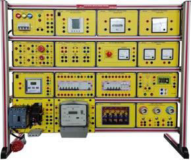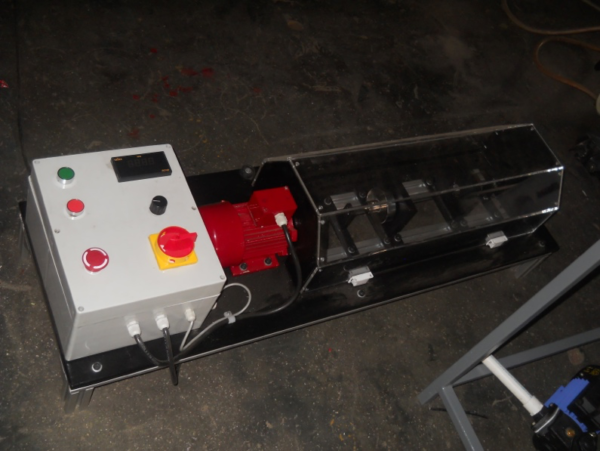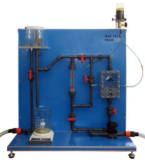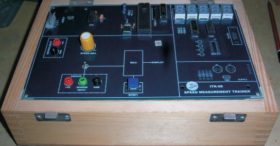Motor Driven Torsion Test Apparatus: 200Nm Model MT 158
Home » Products » Motor Driven Torsion Test Apparatus: 200Nm Model MT 158
Motor Driven Torsion Test Apparatus: 200Nm Model MT 158
Sci-tech Motor Driven Torsion Test Apparatus: 200Nm Model MT 158 is an experimental unit allow torsion tests in which specimens are subjected to load until they fracture. The clean layout and simple operation mean the experimental sequence can be observed in all details and phases. The power of the experimental unit allows tests to be performed on an industrial scale. In the experiment, metallic specimens are twisted until they are destroyed by typical shear fracture. The twisting moment is applied from a high-ratio reduction gear motor. A frequency converter offers four different drive velocities in forward and reverse rotation. The base plate is torsionally reinforced. A transparent protective cover protects against flying fragments. Specimens of different materials and different lengths are included in the scope of delivery. The measuring device can be moved on the rigid frame to adapt to different specimen lengths. The effective twisting moment (test moment) is measured by means of a moment-measuring shaft fitted with strain gauges and can be read directly on a display. The twisting angle is recorded by an incremental encoder and can also be read. The microprocessor-based instrumentation is well protected in the housing.
| Size: | 120cm x 60cm x 40cm (LxWxH) |
| Weight: | 105 kg |
Item Description
Features
- Measure the test moment by means of strain gauge
- Incremental encoder for measuring the twisting angle
- Four different deformation rates can be configured
- Experiments based on industrial standards
The torsion test is a destructive testing method that studies the plastic behaviour of materials. In practice, components that are twisted in their application (e.g. screws, shafts, axles, wires and springs) are studied with this test method.
Sci-tech Motor Driven Torsion Test Apparatus: 200Nm Model MT 158 is an experimental unit allow torsion tests in which specimens are subjected to load until they fracture. The clean layout and simple operation mean the experimental sequence can be observed in all details and phases. The power of the experimental unit allows tests to be performed on an industrial scale.
In the experiment, metallic specimens are twisted until they are destroyed by typical shear fracture. The twisting moment is applied from a high-ratio reduction gear motor.
A frequency converter offers four different drive velocities in forward and reverse rotation. The base plate is torsionally reinforced. A transparent protective cover protects against flying fragments.
Specimens of different materials and different lengths are included in the scope of delivery. The measuring device can be moved on the rigid frame to adapt to different specimen lengths.
The effective twisting moment (test moment) is measured by means of a moment-measuring shaft fitted with strain gauges and can be read directly on a display. The twisting angle is recorded by an incremental encoder and can also be read. The microprocessor-based instrumentation is well protected in the housing.
The Sci-Cal software, together with the microprocessor, provides all the advantages of using software to help conduct and analyse the experiments. The unit is connected to the PC via USB.
See also different:

Features Includes commonly used electrical devices in household/industrial Electrical Installations. Safety socket on synoptic with graphical symbols of electrical devices. Troubleshooting of Electrical Installation. Optionally Transformer Win [...]



